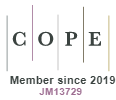Importance of Architecture and Planning of Kanchipuram and the Dynamics of Implementing Architectural Restoration
DOI:
https://doi.org/10.15415/cs.2019.71004Keywords:
Urban heritage, Vernacular Architecture, Context, Social Capital, Block, TissueAbstract
The importance of traditional architecture and planning of Kanchipuram is expressed through a set of objective and subjective map based indicators. The analysis is done at the block level. The results brings out values expressing the epitome of the traditional architecture and planning. The paper presents the map based analysis of the traditional core. The map based analysis perceives changes in the tissues of the study area. The paper emphasizes the importance of social activities as a key to good urban life. The importance of social activities in par with physical component holding it is also presented. A subjective note on climatic considerations at the block level is given based on observations. To compliment conservation measures, a feasibility study to revamp vernacular elements in the modern facades of the city is probed. Stated preference survey method was adopted for the feasibility study. Emphasis is given to public participation and professional involvement in the process of planning and implementing conservation measures. The measures shall realize economic development and life processes. Further certain morale ethics involved in the process methods of planning is discussed. Though the changes are high; the city upholds bright quos towards conservation pertaining to acceptance of traditional aspects and the urge for socialization.
Downloads
References
Amareswar Galla, (2016). Culture and Developement in New Urban Agenda: Learning from the Hoi and Amaravati, Special issue on Asia and Urban Heritage.
Amir Hossein Askari, and Kamariah Binti Dola, (2009). Influence of Building Façade Visual Elements on Its Historical Image: Case of Kuala Lumpur City, Malaysia
Amir Hossein Askari1*, Soha Soltani2, (2018). Contribution of Building Façades to Attractive Streetscapes: Study of Two Main Streets in Kuala Lumpur City
Andrea Colantanio and Tim Dixon, (2011), Urban regeneration and social Sustainability.John Wiley & Sons.
Ashworth, Gregory J., and J. E. Tunbridge. (1990). The tourist-historic city. London: Belhaven..
Carin Combrinck, (2018). Socially responsive researchbased design in an architecture studio, Frontiers of Architectural Research.
Hamed Mohammadi Mazraeha, MahdiehPazhouhanfar, (2017). Effects of vernacular architecture structure on urban sustainability case study: Qeshm Island, Iran, Frontiers of Architectural Research.
Hong Kong, Kin Wai Michael Siua,b,* and Yi Hua Huanga (2015). Everyday life under modernist planning: A study of an ever-transforming urban area in, Urban Design International .308
K. Koffka, (2013). Principles of Gestalt Psychology. Evanster, USA: Routledge.
Lino Bianco, (2017). Architecture, values and perception: Between rhetoric and reality, Frontiers of Architectural Research.
Minja Yang, (2016). Humanising the city: Trends in Asia Pacific, Special issue on Asia and Urban Heritage.
Mir Ahmad, Kashan, (2016). The Role of Physical Characteristics in Enhancing Social Interaction and Use of Urban Space (A case analysis of neighborhood center of Soltan)
Murth,G.S and Bari (2012). Sense and the city – Dynamics of economics and culture.
Nany Yuliastuti*, Annisa Mu’awanah Sukmawati, Purwoningsih Purwoningsih, Utilization Of Social Facilities to Reinforce Social Interaction In Formal Housing
Olgu Caliskan, Bardia Mashhoodi, (2018). Urban Coherence: a morphological definition, research gate.
Olgu Caliskan, Bardia Mashhoodi, (2017). Urban Coherence A Morphological Definition, Urban Morphology International Seminar on Urban Form.
Rohit Jigasu, Gaima Jain, Anushree Deb (2013). Socio Economics of Urban Heritage
Sergio Porta, John Luciano Renne, (2005). Linking urban design to sustainability: formal indicators of social urban sustainability field research in Perth, Western Australia, URBAN DESIGN International.
UNESCO. (2010). Histoic Districts for all-India. New Delhi: UNESCO
Xin Li, Zhihan Lv, Ihab Hamzi Hijazi, Hongzan Jioa, Li Li, Kuncheng Li, (2016). Assessment of Urban Fabric for Smart Cities,IEEE Access.
YuanWang., (2012). Management of the Grand Canal and it’s bid as a world cultural heritage site. Frontier of architectural research 37.
Downloads
Published
Issue
Section
License
Articles in the Journal of Creative Space (Creat. Sp.) by Chitkara University Publications are Open Access articles that are published with licensed under a Creative Commons Attribution- CC-BY 4.0 International License. Based on a work at https://cs.chitkara.edu.in. This license permits one to use, remix, tweak and reproduction in any medium, even commercially provided one give credit for the original creation.
View Legal Code of the above-mentioned license, https://creativecommons.org/licenses/by/4.0/legalcode
View Licence Deed here https://creativecommons.org/licenses/by/4.0/
 |
Journal of Creative Space by Chitkara University Publications is licensed under a Creative Commons Attribution 4.0 International License. Based on a work at https://cs.chitkara.edu.in/ |







